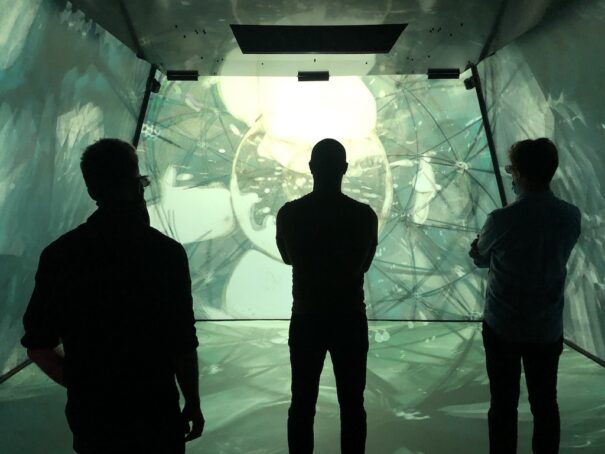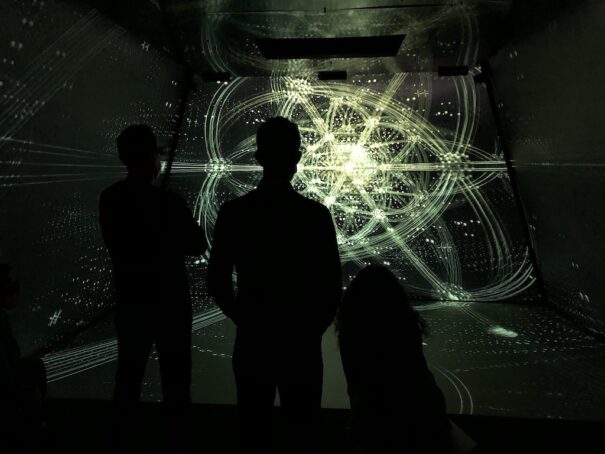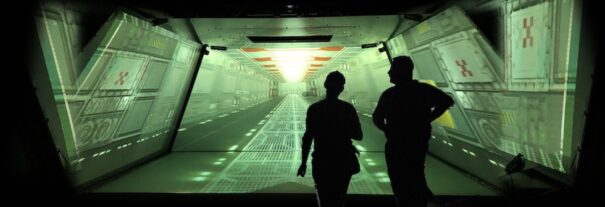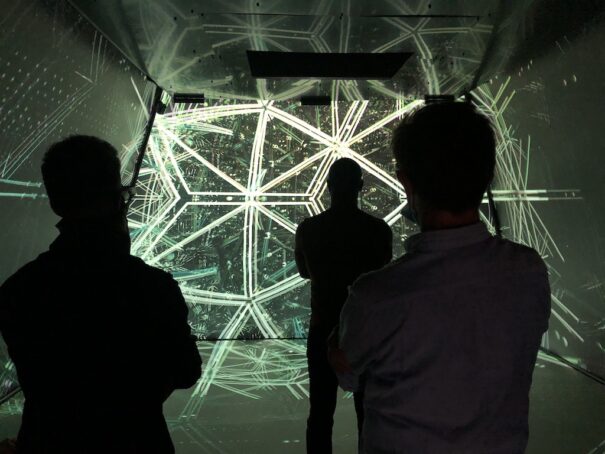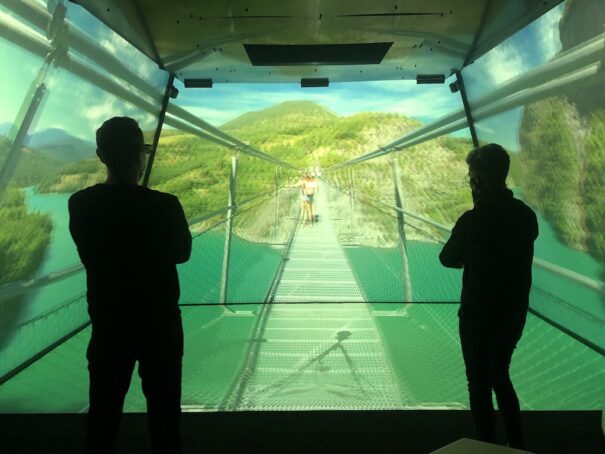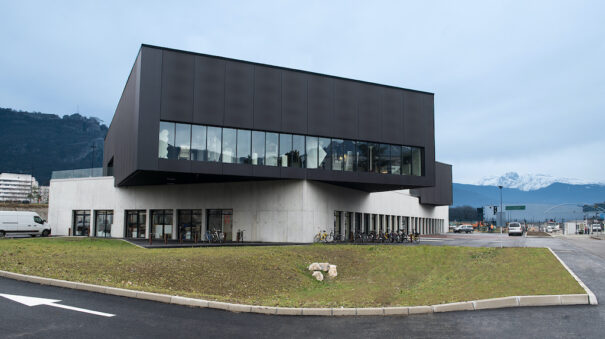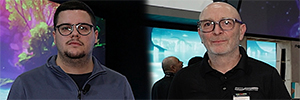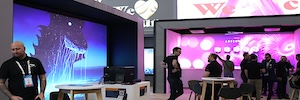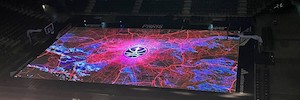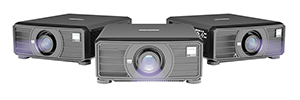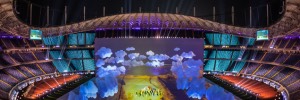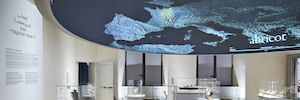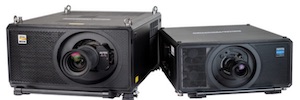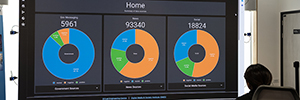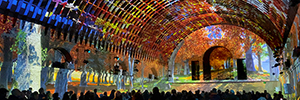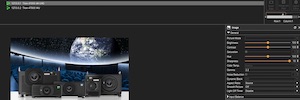MPM elige a Digital Projection para una innovadora Cave en CEA Tech
El integrador MPM Equipement utiliza el proyector E-Vision Láser 10K de Digital Projection para una instalación temporal en una Cave, ubicada en uno de los laboratorios que gestiona CEA Tech.
Con más de 3.300 m2, el laboratorio de CEA en la ciudad francesa de Grenoble -conocido como Y.Spot– es un centro de innovación abierto que se utiliza para desarrollar una amplia cartera de tecnologías para energía y sanidad, así como para difundir nuevas tecnologías para la industria, tendiendo un puente entre los mundos de la investigación y los negocios.
A través de su trabajo en Y.Spot, que acoge colaboraciones con la industria, pymes, estudiantes, arquitectos y diseñadores, CEA Tech (rama tecnológica de la Comisión de Energía Atómica y Alternativa de Francia – CEA) también proporciona a las empresas acceso a tecnologías facilitadoras clave, así como a las desarrolladas por otras divisiones operativas de esta entidad.
Al igual que CEA Tech, el especialista en integración MPM Equipement también realiza su labor en diversos sectores, ya que comenzó con instalaciones en teatros, salas de conciertos y museos, y luego pasó a trabajar en salas de conferencias, de reuniones y recintos deportivos del entorno MICE.
“También ayudamos a los clientes a digitalizar su oferta con nuevas herramientas de comunicación mediante Byod (traiga su propio dispositivo) o la automatización -explica Nicolas Jeanselle, director de proyectos de MPM Equipement-. Estamos orgullosos de ser especialistas en todo lo audiovisual y trabajamos para que todo funcione y se comunique conjuntamente. La tecnología Cave (entorno de realidad virtual inmersiva) no es particularmente nuestra especialidad, pero este proyecto va más allá”.
Desarrollo de Sirce
La instalación, denominada Sirce (Smart immersive room for circular vision experiment), fue diseñada por el ingeniero y escenógrafo Frédéric Ravatin, de la empresa Creatime, en forma de tres pirámides truncadas, con una base de 5 m2 (variable +/- 10% según los prototipos y la configuración del espacio).
En el interior de este espacio, el suelo y tres de las paredes sirven de pantallas con relieve 3D que pueden utilizarse para recrear entornos y objetos, e incluso albergar videoconferencias también en tres dimensiones.
Aunque la Cave puede albergar hasta veinticinco personas, normalmente la utilizan entre cinco y diez. En la misma, se invita a todos los visitantes a usar las gafas activas Xpand 3D para tener una sensación de inmersión total cuando se proyectan contenidos estereoscópicos en las cuatro pantallas sincronizadas y alineadas.
Como las caras de Sirce están inclinadas hacia dentro con un ángulo de 26 grados, se pueden inducir y exagerar importantes distorsiones de perspectiva en estereoscopía, haciendo que el entorno virtual parezca mucho más grande de lo que en realidad es.
De esta manera, el usuario puede sentir que mira ‘más allá’ de los confines de la Cave, recreando un mundo más grande, cuyas dimensiones y espacio siguen pareciendo ‘normales’ (un fenómeno conocido como ortoestereoscopia).
Proyectar la percepción
“El escenógrafo del proyecto ganó el concurso para la remodelación del Y.Spot del CEA, donde está instalada la Cave -recuerda Jeanselle-. La idea era crear un entorno virtual en el que se pudiera mostrar cualquier medio y contenido de forma inmersiva”.
Además, MPM Equipement ya había trabajado con Frédéric Ravatin en varios proyectos, entre ellos en el mayor acuario-museo de agua dulce de Europa: Aquatis, ubicado en Suiza.
Tras un largo periodo de pruebas, el equipo de MPM dedujo que el único método que podía utilizarse para compensar las deformaciones inducidas por las pantallas inclinadas era recrear el recorrido que haría la luz desde el objeto observado hasta los ojos del espectador, simulando en las pantallas, a un píxel, por dónde debería pasar el haz de luz si el espectador estuviera realmente en ese entorno virtual.
Como señala Jeanselle, “estábamos, en efecto, proyectando la percepción de la gente”. Así, para cada pantalla se colocaron dos cámaras virtuales, ubicadas aproximadamente donde estarían los ojos del espectador (a unos 1,6 m del suelo, en este caso); una para el ojo izquierdo, dibujada en rojo, y otra para el ojo derecho, en azul.
Cada una de las cuatro superficies de proyección (izquierda, frontal, derecha y suelo) requiere dos cámaras, lo que da un total de ocho, agrupadas en cuatro equipos de dos. Las cámaras izquierda y derecha de cada equipo estaban separadas 6,5 cm (la distancia media entre ambos ojos) y perfectamente paralelas, sin convergencia.
“Esta información se registra, lo que nos permite crear un modelo sintético de Sirce a la escala adecuada, gracias a que las dimensiones y los ángulos tomados se registran con un medidor láser. A continuación, utilizamos las mismas cámaras como si fueran proyectores, texturizando las caras interiores de la Cave”, puntualiza Jeanselle.
Una vez grabada la información, se envía en tiempo real, para lo que se utiliza TouchDesigner de Derivative, a cinco equipos E-Vision Láser 10K del fabricante Digital Projection para proyectarla en la Sirce.
“Necesitábamos una unidad de bajo mantenimiento, capaz de suministrar 10.000 lúmenes, con una lente de muy corto alcance que pudiera estar en eje con el centro de la Cave -continúa Jeanselle-. El láser también era obligatorio desde el punto de vista medioambiental, además de garantizar una baja generación de ruido y calor en la carpa relativamente pequeña”.
Los proyectores de Digital Projection, como asegura este experto, “cumplían todos estos criterios y más, a la vez que tenían un precio muy bueno teniendo en cuenta su rendimiento y calidad. También nos proporcionó un socio que podía acompañarnos durante toda la fase conceptual y más allá”.
Para esta aplicación había que alimentar el videoproyector con dos flujos de vídeo de 120 Hz (un modo de conexión llamado Dual Pipe), para permitir que cada unidad alternara muy rápidamente según una frecuencia precisa entre dos fuentes de vídeo, en este caso, los ojos izquierdo y derecho.
Solucionar esta cuestión, a lo que se sumaba que los proyectores debían ser capaces de manejar muchos tipos diferentes de 3D, dio lugar a un complejo periodo de calibración para el equipo, como señala Jeanselle.
“Fue un proceso largo, pero la calidad de la calibración industrial que se hizo antes de recibir los proyectores fue impresionante. No hubo ninguna discrepancia entre cada unidad, aunque no fueran exactamente del mismo lote. En Digital Projection se portaron fantásticamente durante todo el proceso y nos prestaron los proyectores durante semanas para que pudiéramos probarlos con el resto de dispositivos y contenidos”.
En este sentido, Jeanselle recuerda que “Stephane Bourdon, director de ventas de Digital Projection en Francia, y su equipo estuvieron siempre disponibles; no hubo problemas, se ciñeron a las fechas acordadas y dedicaron muchísimo esfuerzo a la preventa. Sencillamente, no habríamos podido hacer el trabajo sin ellos”.
Aunque los últimos retoques de la instalación tuvieron que posponerse debido a las continuas interrupciones causadas por la COVID-19, Jeanselle señala que el cliente estaba muy contento con el proyecto hasta el momento.
“Si un espectador se sitúa en la posición exacta de las cámaras, la ilusión es perfecta, incluso en estereoscopía. La experiencia que hemos adquirido en la fase de prototipo, combinada con el avanzado hardware y el software, nos ha permitido mantener la máxima calidad de inmersión. Incluso con media docena de espectadores simultáneos, el efecto sigue siendo increíblemente impactante”.
Para Tiana Delhome, directora de hospitality de CEA Y.Spot, “el equipo de MPM nos ha guiado muy bien en lo que era un proyecto muy complejo e innovador, mostrando una gran disponibilidad y flexibilidad en muchas ocasiones, además de cumplir todos los plazos. Estamos muy contentos con el dispositivo terminado y esperamos beneficiarnos de él durante años”.
Te gustó este artículo?
Suscríbete a nuestro RSS feed y no te perderás nada.
• Sección: Casos de estudio, DESTACADO, DESTACADO Caso Estudio, Proyección, Realidad Aumentada



